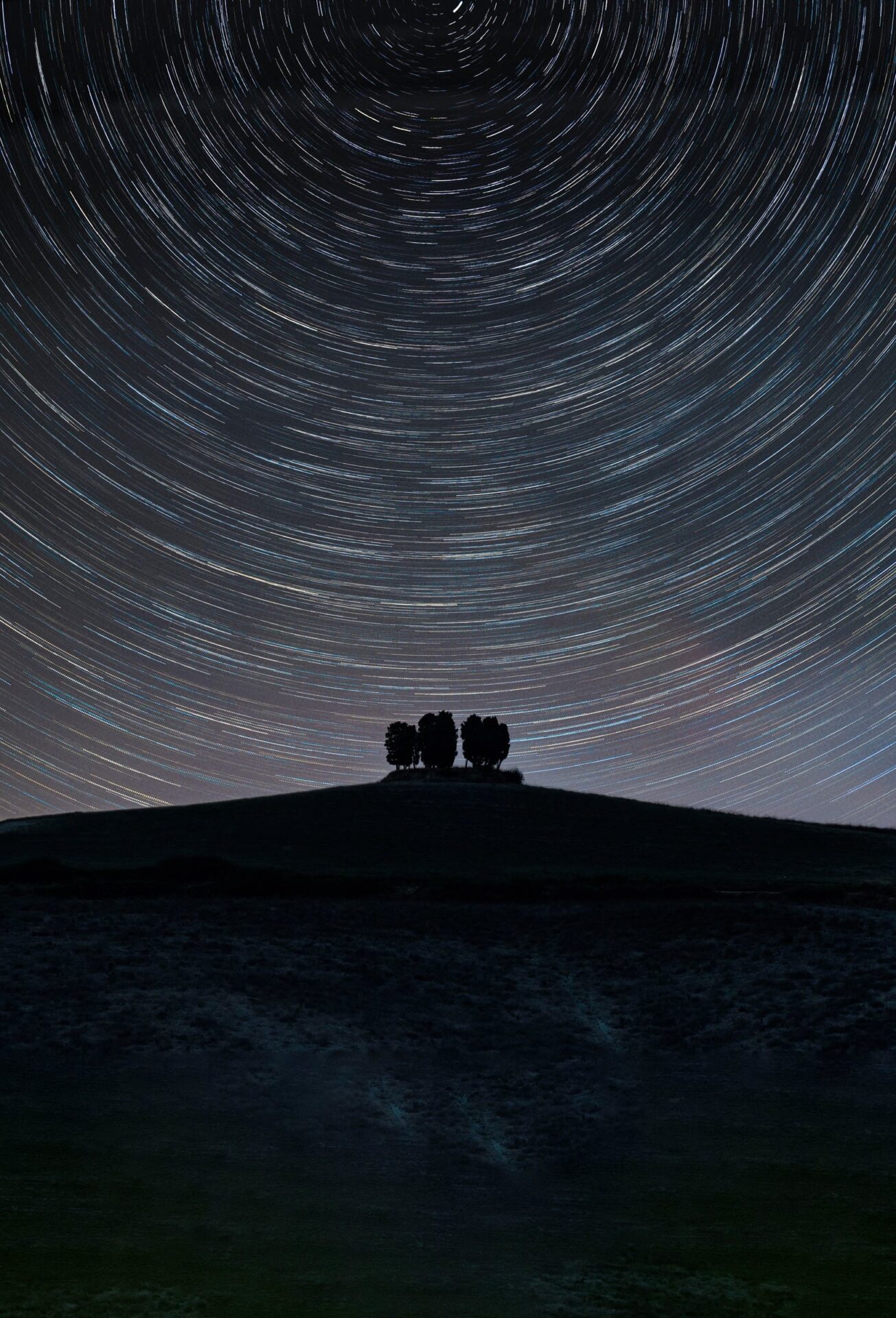*
Oliver Hull
Earth’s gravity might have snared an asteroid making a very near miss of the planet 466 million years ago. As it shattered its debris went into orbit, giving our planet its own ring that may have lasted millions of years.
Astronomers have long thought that Earth was too small to have rings like the giant planets do. But for 40 million years in Earth’s past, all known impacts happened to land near the equator, and to geologist Andy Tomkins (Monash University, Australia), that unusual concentration suggests those asteroids fell from a ring that was orbiting Earth.
“What got me started on this was a popular news story that Mars might have had a ring in the past,” says Tomkins. “I didn’t realize such a small planet could ever have rings, and that made me think about what Earth would look like with rings.”
Having studied meteorites, Tomkins knew that impact craters were unusually abundant during a 40-million-year window in the Ordovician Period, starting about 466 million years ago. Curious if those impacts might have come from a ring orbiting the planet, he asked colleague Erin L. Martin to plot those craters on a paleogeographic map of the planet at the time. When she found all the craters were close to the equator, they decided to investigate further.
Earth took an unusual beating during the Ordovician Period, with 21 known impact craters created between 485 million to 444 million years ago. To investigate the exact location of the craters, given the constant shifting of Earth’s crust, the researchers studied six models of plate tectonics for the Ordovician. In all six models, at least part of all 21 craters fall within 30 degrees of the ancient equator. The odds of such a distribution if the objects came from random orbits in the asteroid belt are astronomical, so to speak. But the odds would be more reasonable if the asteroids originated from an orbit on the plane of Earth’s equator, the team concludes.

Earth and Planetary Science Letters 2024
There’s little precedence for rings around bodies smaller than the giant planets, but it’s not zero. We aren’t certain whether Mars ever had rings in the past, but we do know of two much smaller bodies that currently have rings: the minor planets 10199 Chariklo and 2060 Chiron. Both are Centaurs with orbits between those of Saturn and Uranus, and both have multiple rings; the origin of those rings, however, remains uncertain.
Tomkins thinks Earth’s ancient ring could have formed after an asteroid passed too close to Earth and was pulled apart by its gravity. From the size of the known craters, he estimates that the incoming object was at least 12.5 kilometers (7.8 miles) wide.
Big chunks would have fallen from orbit to form craters, while smaller debris could have stayed longer in orbit as a ring, potentially lasting millions of years. The long-lived ring might even have shadowed the planet, triggering global cooling and contributing to an ice age and mass extinction that occurred during the Ordovician Period, the team speculates.
The cluster of Ordovician asteroid impacts on Earth coincided with a more dramatic event — the breakup of a 150-kilometer body between the orbits of Mars and Jupiter, which became the parent of a type of meteorite called L type chondrites. All of the Ordovician craters were formed by L chondrite asteroids, which are the most common type of meteorite falling down to Earth today.
“This breakup is the largest documented breakup of an asteroid,” says geologist Birger Schmitz (Lund University). He spoke with Sky & Telescope from Lake Hummeln in southern Sweden — a lake, he notes, that formed in an Ordovician crater.

Birger Schmitz
Schmitz, who was not involved in Tomkins’s research, studies micrometeorites, specifically submillimeter-size L chondrites. In his own work, he has found that the influx of these tiny meteorites to Earth increased by a factor of 100 to 500 after the ancient breakup. He agrees that they contributed to the Ordovician ice age.
Tomkins’s work lights a path forward. “His idea is testable,” Schmitz adds. While the recent study approached the Ordovician from the perspective of large impactors, Schmitz sees potential tests of the idea from looking at much smaller intruders. “We can take samples from different latitudes to see if there are smaller numbers [of micrometeorites] the further we go away from the [ancient] equator,” he says. If scientists find such a trend, it will help validate Tomkins’s hypothesis.

Oliver Hull





No comments! Be the first commenter?